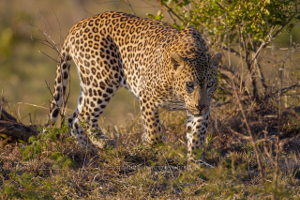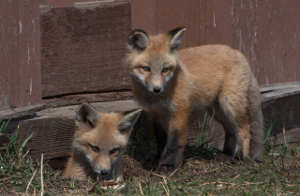Why feed a raw food diet?
To help answer this question it may be helpful to explore the recent history of processed dog food. You will probably have come across the expression ‘as fit as a butchers dog’. This is a commonly used phrase to describe a person (or animal) that is in optimum health. The phrase itself derived from the fact that not too long ago, healthy dogs were fed from the butchers, not the supermarket. It was a common knowledge that a dog fed on butchers scraps would be a very lucky (and well fed) dog indeed. This can also be linked with a cats’ diet as well as many other carnivores that may be potentially fed on a manufactured food substitute over a natural product.
Before the introduction of commercial pet food, dogs consumed table scraps left by their human companions or anything they could scavenge or kill. There was no such thing as tinned or dried dog foods. We now know that processed convenience foods are not healthy for humans, so why would processed foods be good for our pets? As a society in general we have become used to eating convenience foods, and unfortunately we have passed this ‘convenience’ on to our pet companions. Whilst the ease of these foods is favoured by many people, the nutritional benefits amongst many other factors is something that is lacking compared to fresh or natural products.

It is much easier to purchase bags of dried food with a greater shelf life from the local pet shop, especially if we are given the information that, some even offer added vitamins and minerals providing all of our pets’ nutritional needs.
However, health issues that were unheard of years ago are nowadays worryingly common in our companions; from obesity to food intolerances, dental conditions and cancers. Unfortunately this has been on the increase since processed pet foods became the day to diet day for so many.
One of the main reasons that processed pet food is believed to be unbeneficial for a dog, and the hypothesis on which a raw food dog diet is based upon, goes back to how the dog has evolved. Processed pet foods are unnatural, and certainly not the type of thing your pet would have eaten in the wild. For a start, processed pet food is cooked, and cooking food damages some of the valuable ‘live’ enzymes found in raw meat and vegetables. These are the very enzymes that your pet needs to be able to digest food properly.
Combine this with the fact that nearly all forms processed foods are full of preservatives and additives, you come to get a clearer picture of why processed food is probably not the best choice of feed to keep your pet in optimum health temperament.
Dry foods can also have a relatively low percentage of good quality ingredients. And certainly not the ratio of meat proteins usually found in a good raw food diet. Most dry commercial pet foods are at least 50% grain to give the carbohydrates needed to hold the food together. A dog for one does not need, and certainly cannot properly digest this amount of unnatural carbohydrates.
And this is where health problems can arise. Poor nutrition combined with improper amounts of exercise (or none at all) are leading to serious health problems for our canine and feline friends. Nowadays pets suffer numerous problems which appear to be inextricably linked to their modern day processed diet, and unfortunately these conditions are on the increase. The incidence of obesity, cancers, dental problems and allergies bear testament to this.
We would not feed our human family food that we suspect could lead to health problems, so the same ethos must apply to our pets.
Wild dogs and many species of wild cats have survived on the raw meat and the pre-digested foods of their prey for thousands of years. This type of diet is high in protein, easily digestible and provides optimum nutrition and energy. In its natural environment the diet would have been mainly raw, after all nobody cooked the rabbit for the wolf, likewise the chicken for the fox.
This raw meat contained live enzymes, natural anti-oxidants, fully digestible proteins, health promoting essential fatty acids, organic vitamins and minerals, etc. They were definitely not the carbohydrate-filled diets of modern processed dog food of today.

When a carnivore such as a dog or wolf eats an herbivore (for example a rabbit) it generally gets to eat some meat, bone, and organ meats. The carnivore will also digest a small amount of green vegetation found in the herbivore's digestive tract. It is these components that make up a good raw food diet. The vitamins and minerals in these food groups occur naturally.
One has to consider that if raw food was dangerous, our domesticated pets would have become extinct many years ago. As we have previously mentioned, processed food is a relatively modern invention, dogs and cats have been eating raw for nearly 15, 000 years since they were first domesticated!
When preparing raw meat one should take the usual precautions that you would when feeding a member of your family, by cleaning the counter, using a clean knife and washing your hands etc. As for bacteria being passed on through faecal matter, then again, the normal precautions of hygiene would apply. We need to bear in mind that dogs are natural scavengers so are very well-equipped to deal with bacteria. In any event, they are able to deal with the low level of contamination which may be present in fresh uncooked meat. Their saliva has strong antibacterial properties and their short digestive tract and powerful digestive juices are designed to eliminate food and ‘kill’ bacteria quickly.
We shouldn’t forget that our animals have been roaming the wild for years eating a variety of rotten carcasses, fruit, fresh game, grasses and herbs. They even eat herbivore faeces.
The anti-bacterial juices in their mouth and stomach are highly effective and mean they can eat things which a human cannot.
Unfortunately it is more likely that processed foods will make your dog ill. Some people think dogs are omnivores, meaning they are designed to eat both vegetation and meat. It is true that dogs do and can eat vegetation, because they are opportunists, but they are anatomically carnivores.
Dogs are opportunistic carnivores with omnivorous abilities. However, their entire anatomy and physiology has been designed for a meat eating diet.
This does not mean that they thrive on meat alone, and dogs have proven that they can survive on human dinner scraps and certain vegetation during times of hunger. However to optimise their health we need to recognise that they are first and foremost carnivores with omnivorous abilities.
What about bones? Despite what you may have heard, dogs do need raw meaty bones. Notice the word ‘raw’. Cooking bones makes them brittle and therefore, more likely to splinter and this is why cooked bones are an issue. Do not feed your dog cooked bones.
You can see by their teeth that canines and felines are purpose built to eat bones. Their wild ancestors have been eating raw meaty bones for a very long time with no ill effect. Chewing on a bone is a very stimulating activity for a dog which also releases endorphins which promote a feeling of well-being. But perhaps the best thing about bone chewing is that it prevents tartar build up as bones act as a natural tooth brush for a dog. Some owners may think that dental problems for pets are not as serious as other ailments, but bad dental health left untreated can lead to the death of your pet so it is important that uncooked bones are provided as an addition to any raw food diet.
It is all about feeding your pet the way nature intended. At the end of the day, nature is indisputable. You cannot argue with nature. If you want to feed your pet a BARF diet, it essentially means you cannot feed any cooked or processed food.
Raw feed allows your pet to be fed a variety of human grade raw meat and bones, fruits and vegetables and supplements with the objective being that your pet will receive a balanced diet. In the wild dogs and cats eat meat, bones, skin, organs, stomach contents, and an array of other parts. They may feed on fruits, berries, herbs and grasses. Hence the most common BARF diet consists primarily of raw, meaty bones as well as a variety of fruits and vegetables, muscle meat and organ meats.
Just some of the physical benefits of a food diet can be as follows:
- Cleaner teeth and fresh breath
- Better weight control reducing obesity.
- Improved digestion
- Shinier, healthier skin and coat
- Reduction of allergy symptoms and ear infections
- Increased mobility in older animals
- More energy and stamina
- Strengthened immune system
- Reduced risk of arthritic conditions and diabetes
- Improved liver, pancreatic and bowel health as well as lowering the risk of degenerative diseases
- Savings due to less trips to the vet
Aggression and behavioural issues can also be linked to poor diet, so switching your pet to a BARF diet could substantially improve any behavioural issues. Some common behavioural problems which may be linked to poor diet are chewing, excessive digging in the garden by dogs, food theft, jumping up and hyperactivity. It is well known that a diet full of chemicals, flavourings, additives and colourings can lead to an increase in negative energy in a pet. We have seen some dramatic improvements in the health of some dogs when fed a raw food diet.

